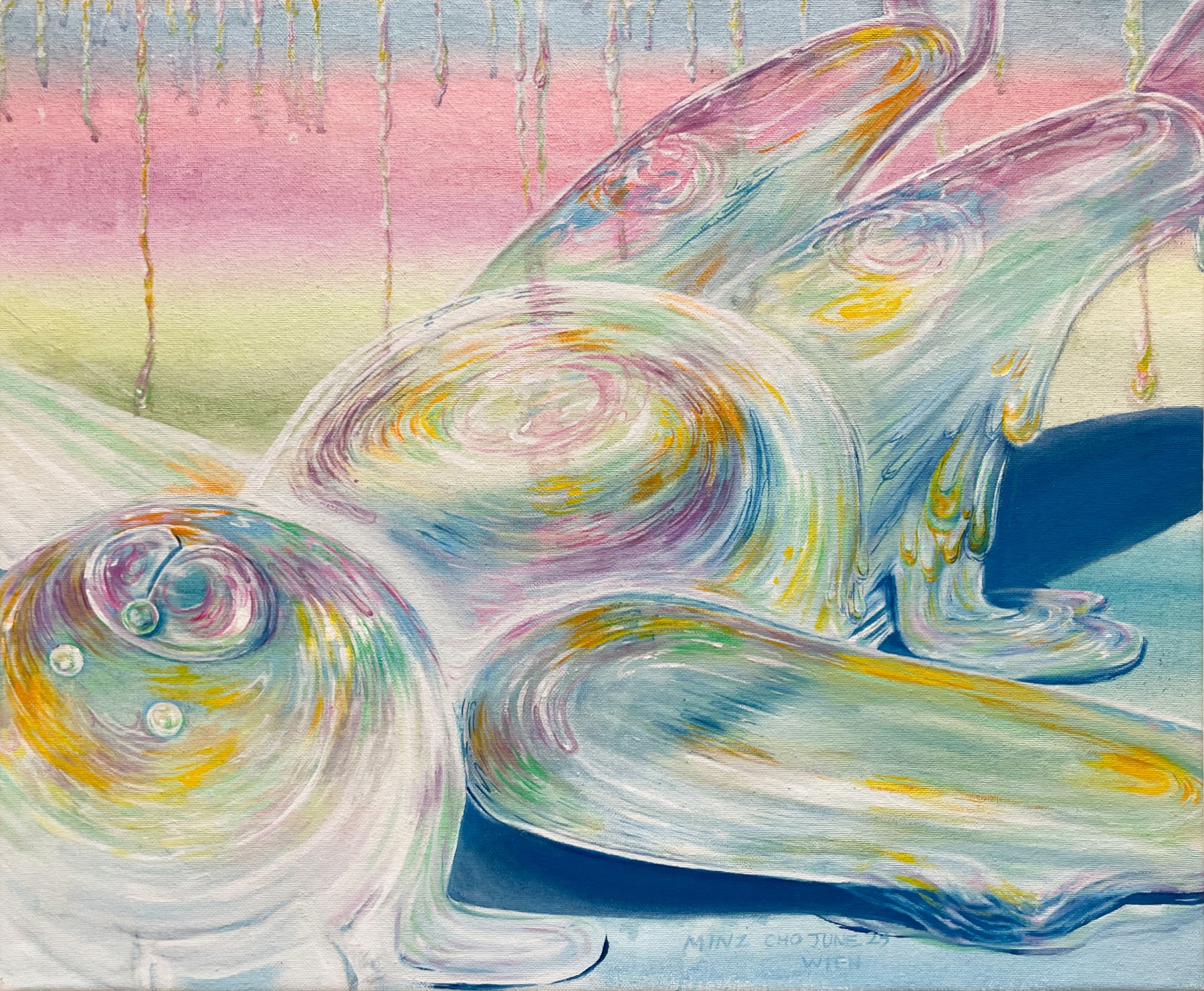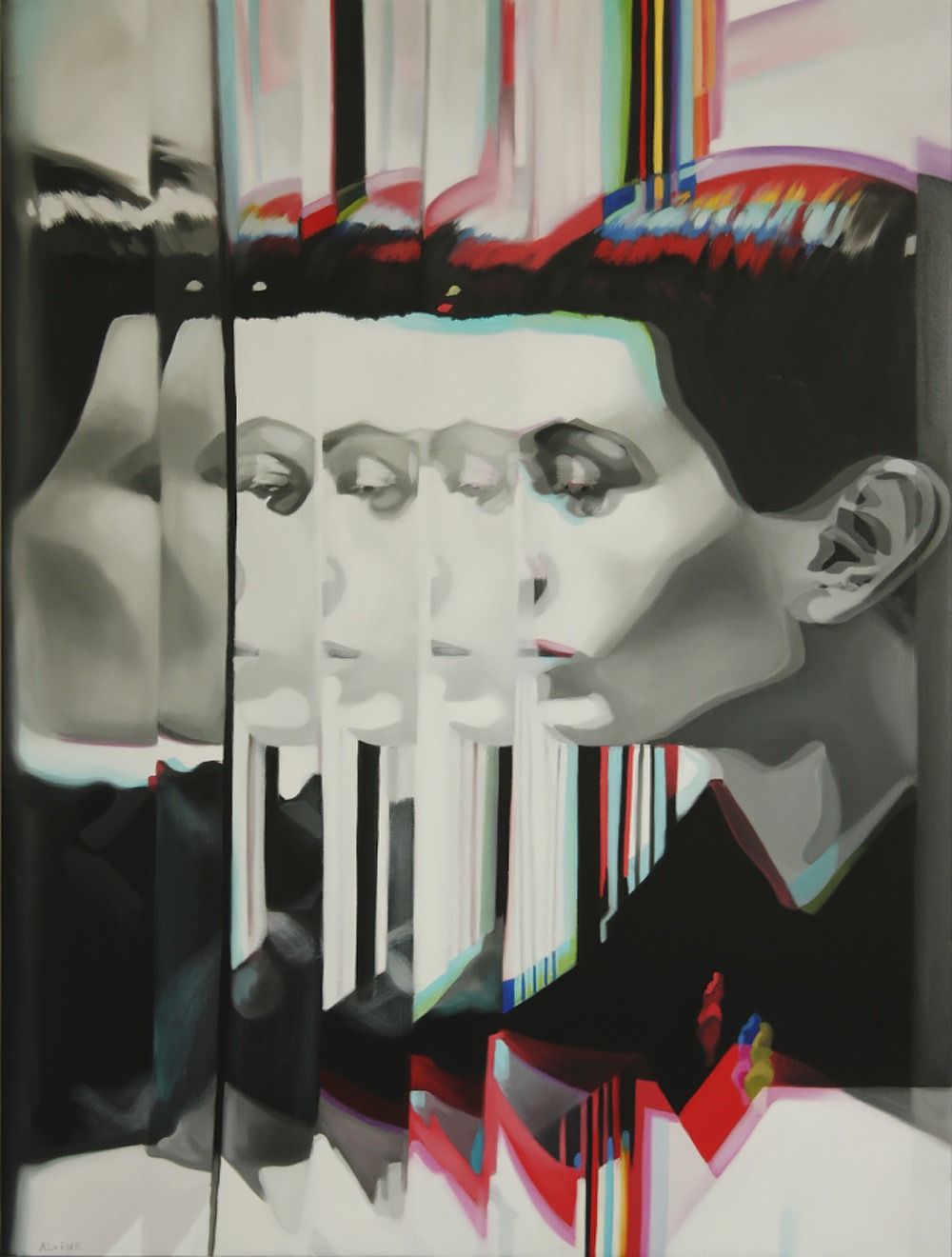
Avrian Art Gallery – Tomorrow’s Art, Today
A conversation with Charles Goettmann, art collector and founder of the Avrian Art Gallery for Emerging Art
In today’s interconnected world, the boundaries of art extend far beyond national borders, reaching across continents and enabling people from diverse cultures to embrace and engage with artistic expression from around the globe. Amidst this vast landscape, a group of artists remains among the art world’s best-kept secrets – early-stage talents, fine-art students, and recent graduates brimming with ideas, questions, and profound thoughts. Their works represent youthful anarchy, pop euphoria, appreciation for classic values and tradition, hopes, failures, lovesickness, and intuitions, all translated into a compelling language of the pictorial and form. However, these artists often remain hidden gems with little exposure among art buyers, collectors, and the international public.
Charles Goettmann, a Munich-based art collector and private equity banker, firmly believes that works by early-stage artists should not be left to chance discovery as a delightful surprise. That’s why he recently founded the Avrian Art Gallery, an online destination for art explorers that aims to nurture the arts ecosystem by championing talented emerging artists long before they gain recognition in the institutional art world. Through close collaboration with art academies and design institutes worldwide, the gallery strives to empower artistic potential and support emerging talents in their chosen lifelong careers by employing a proven brick-and-mortar gallery approach alongside online possibilities.
Navigating the world of private equity while simultaneously spearheading a startup gallery for emerging art, Charles Goettmann and his team are on a quest to prove that art labelled with an affordable price tag can indeed delight even the most sophisticated tastes and make the entry-level art market truly accessible, relevant, and transformative for all. As he continues to expand his private collection, which currently spans Europe and other continents but with Africa still on the horizon, Goettmann hopes Avrian Art Gallery will be the key to finding the pieces that many a collection still lacks. In the following brief conversation, Goettmann explains his personal journey into art and collecting, sharing his revelations along the way as well as the reasons he believes art should have a more prominent status in our lives for the greater good.

How did your journey in the art world begin?
It started much later than it actually could have. Despite being surrounded by sophisticated art collectors in my personal life and through my professional affairs in private equity, it took me quite a while before I fully engaged in the world of art or even made my first art purchase.
When did the turning point occur?
About a decade ago, various influences – ranging from reading books to real-life moments – were impacting me. An example: for years, I had been casually passing by an artwork at the home of a friend who happens to be a passionate collector of the Zero Group and their associated art movement. I always thought it was some kind of print. Years later, after a second (or third) glass of wine, I approached the artwork and noticed rows of numbers – code, and miscoding – within the pattern. I then directly asked if the “print” was based on an algorithm or anything like that because of its apparent flaws. To my surprise, it turned out that the “print” was actually a painting by Roman Opalka and part of his fantastic, as well as fanatic, life’s work.
Tell me more about your first real encounter with this work by Opalka.
It was part of Opalka’s lifelong project, titled “1965/1 – ∞” (1965-2011), which involved painting white numbers from 1 to 5,607,249 in long rows across a dark background. Interestingly, his last painting was almost entirely white on a white canvas as he was gradually adding more white to the background with each successive painting, thereby symbolizing the unfolding of the artist’s life and the ageing process. His last painting was nearly all white numbers on a white canvas, and covered only parts of the surface. This revelation seriously got me thinking in many ways.
What changed within you?
It was quite shocking for me that I’d been so ignorant, walking by this phenomenal work without notice and not asking questions and learning the fantastic story behind it much earlier. It felt like years had been wasted on my end, to be honest.

What was the first piece you bought, and what emotions and sensations did it evoke?
This is a deeply personal question for me. In fact, I have never truly revealed to anyone which painting was my first purchase, and I also keep it in storage. My friends don’t know about it either. This might seem a bit strange... My initial art acquisition held great significance for me, as it marked the beginning of a fundamental change in my life as well. I also felt a little guilty about spending so much money on a piece in a world I knew very little about at that point. Nevertheless, I desired to own it too much. Mixed emotions came with it, emotions such as relief, enthusiasm and great joy and happiness, as well as intense excitement as it was just mine and for me to look at.
I’m very curious now. If you don’t want to reveal it, could you at least describe it?
It’s a contemporary art piece created by a European artist who is still alive, which is fantastic. The artwork itself is a large-scale painting.
What style is it?
It’s abstract, though not entirely monochrome; it mainly consists of various shades of grey.
Is it by Bertrand Lavier, Gerhard Richter, or Albert Oehlen?
Hah! No, I want to maintain a little bit of mystery here. But I love Lavier’s works, and I’ve been chasing one particular masterpiece from him for some time now.
Could you highlight some other special pieces in your art collection?
I believe I have around 35 items in my private home. I have much, much more in storage. One artist whose paintings I love is David Fredrik Moussallem, a Finnish-Canadian artist. His mixed-media works present various "stories from the streets." In his collages, he incorporates a mix of street posters, found materials, and so on. I have several works from him in monochrome – works on wood and other materials.

Do you collect anything else besides art?
Yes, I do. I collect ancient books. I have several books that are centuries old – from the Gutenberg era. Unlike viewing artworks, these books are not something you read regularly, and they require extremely careful handling and storage due to their sensitivity. However, just like artworks, books, especially first-edition books, hold a significant historical value and serve as a testament to their time.
Let’s talk about another turning point in your art-filled life – the Avrian Art Gallery.
I began my collecting journey by acquiring artworks from established artists, essentially skipping the entry-level phase, which is completely contrary to the concept behind the Avrian Art Gallery. However, years later I stumbled upon and purchased a beautiful artwork from a Chinese student – an early-stage artist still studying at the academy. Personally, I don’t prioritize the hype surrounding the artists whose works I acquire. What matters to me is the genuine connection I feel with the painting.
I chose to frame her work differently and prominently displayed it in my home. During dinner occasions, I often ask my guests which piece they like the most among the entire display, without revealing any information about prices or artists. Surprisingly, they regularly point to that very painting, unaware that it’s from an art student (generally speaking, early-stage artists are often overlooked in the art market) and cost only a fraction of what I had paid for the other paintings exhibited next to it. This situation got me thinking, and I’ve never stopped thinking about it since...
ZulaTuvshinbat. Kaktus. 2023. Courtesy Avrian Art Gallery
Could you elaborate?
People want to be told by someone else what constitutes “real” art – what is worthy of the term, what holds value, and so on. However, when it comes to a blank sheet, without any background information, the perspective becomes entirely balanced again. This phenomenon clearly stated that there is still room for improvement within the world of art.
Was this an impulse that led to the establishment of the Avrian Art Gallery for emerging artists?
That, in essence, is the reason why I founded Avrian Art Gallery – to make young, thought-provoking, and compelling works of art accessible globally at a fair price. Unfortunately, many people have never considered the possibility of starting a collection and supporting the arts ecosystem simply because they don’t know that there is art for their budget and, indeed, good art. Artists should not have to rely solely on “big” collectors but also on individuals from various backgrounds with different buying abilities across a wide range. We at Avrian Art Gallery offer a “limited downside and unlimited upside”, so to speak, as we have moved the needle to the very beginning of the value chain. As a result, everyone can simply buy what they like.
Personally, I want to see what art students and emerging talents around the world are creating without having to board a plane, and I want the option to discover new things and make a purchase immediately – before someone else does.
If your art collection could speak, what do you think it would say about your taste?
Well, that’s a tricky question, ha! Different people may perceive everything I have in completely different ways.
My art collection is characterized by its contemporary, provocative and bold nature. It’s incredibly diverse, not confined to any specific theme or genre; it covers a wide spectrum, from A to Z, essentially. I find myself drawn to numerous artists, motifs, and evoked feelings. I can’t limit myself to just one genre or movement; my interests are too varied. Moreover, the artists represented in my collection come from all around the globe, spanning Europe and other continents, though I don’t yet have anything from Africa.
I believe Avrian Art Gallery might be able to assist you here.
That’s one of the goals indeed, yes!
Minz Cho. Melting Bear. 2023. Courtesy Avrian Art Gallery
Have you ever experienced a love-at-first-sight moment with an artwork that you just knew you had to add to your collection?
I’ve had some love-at-first-moment acquisitions where I almost took the ship down, to be frank. I often couldn’t bear the thought of someone else buying it before me. But a piece from an art student at an early stage could also, and already did, trigger such an impulse.
Was this the case with the large-scale grey abstract painting that you keep secret?
Exactly. I was completely open to the experience, and I made the purchase right then and there, without conducting any background research because I simply didn’t care about it. There is real beauty and freedom to evaluate artwork yourself and distance yourself from what the industry has already defined as worthy. That acquisition was purely for me. I don’t collect art for investment to flip it later.
Do you ever seek out art advice?
Occasionally I do seek advice as I believe in the value of knowledge; I often listen to experts, as I am deeply enthusiastic about expanding my understanding. Once, a friend’s father (who also happened to be an experienced art collector) shared how twice in his life he had missed the opportunity to buy a painting and has been regretting it immensely ever since. His story may have impacted me more than I realized because I do tend to make more impulsive and passion-driven decisions when acquiring art.
On a separate note, I had an encounter in a top-notch gallery with a gallerist who tried to tell me how I should feel when looking at a particular painting. According to them, if I didn’t experience a specific emotion, I wasn’t ready for the piece. Frankly, I disagree with this perspective; art appreciation is subjective, and every individual’s emotions and connections to a piece are unique and valid.
Alvine Bautra. Present Continuous. 2022. Courtesy Avrian Art Gallery
How would you describe your professional life in finance and your days with the newly founded online gallery?
You’d be surprised. Very often, I would say even 80% of the time, my conversation with clients is not solely about private equity solutions but also about art. We have a lot of follow-ups about art-related topics, particularly with family offices. So my daily business is already intertwined in both fields.
Regarding the gallery-related working environment, I find it to be very calming and the most balancing corrective to my life in finance. Both fields are rough and competitive, but the world of art is much more charming, human, and diverse. However, I enjoy the privilege of engaging in both worlds, and my background in private equity banking has provided a solid foundation for me to buy art, especially in financing the Avrian Art Gallery.
How do you juggle private equity and the gallery?
With the same core principle. When selecting a team, I strive to bring together individuals with complementary skill sets so that everyone within the team can rely on and build upon each other. The team at Avrian is united by their love of art, of course, and driven by a desire to make a change and leave a mark in culture, just like the artists we scout for around the globe. I believe it is key to select individuals with complementary skills, a shared denominator, and the same vision in the bigger picture so as to ensure actual results.
How does Avrian Art Gallery support emerging artists in navigating the challenging transition period after graduation?
We scout talent from art academies and design institutes worldwide, and we also keep an eye on emerging artists and designers up to four years after graduation. That four-year gap is crucial for young talent. Our internal admission committee consists of industry professionals who evaluate the artists’ works with utmost fairness. During committee meetings, we ensure that emerging artists or art students have the potential we seek to empower and support them in the long run. This process is comparable to that of venture capitalism. And my team is doing that on a very personal level, the same as the brick-and-mortar galleries. We aim to provide these artists with a sophisticated and serious space in which to grow, evolve, and connect with their specific audience.
Marie Waltemode. Woman With Monkey. 2022. Detail. Courtesy Avrian Art Gallery
Do you get to personally meet the artists whose works are featured on Avrian?
Yes, of course, and we also host get-together events for young artists. We recently had the great opportunity to arrange a dinner for a group of students from the Academy of Fine Arts in Rome, for example. It was a fantastic evening with first-year art students but also 2023 graduates attending. I enjoy such events enormously, as we learn so much about the next generation of artists. I’ll share a charming story that would be unimaginable in the world of private equity: I tend to order starters and wine to kick off a dinner so that every guest feels as comfortable as possible, and then they are free to choose whatever they wish for their main course. During this particular dinner, I noticed that some of the attendees ordered only half a pizza as their main course. They were apparently quite shy and humble and did not want to burden me as a host with a hefty bill; I was stunned that the restaurant even served half portions. Interestingly, I later learned that in Rome, ordering just half a pizza is somewhat of a symbol of being an artist or something similar. It was fascinating to witness this unique cultural aspect, and it made me think once again about their careers and lifestyle. The experience with these young artists and witnessing their charming ways left a lasting impression.
What is your advice to someone considering buying artwork or starting a collection?
First and foremost, do your research and seek advice, but ultimately, trust your taste and values. Don’t buy art based on someone telling you it’s a good investment or that it’s considered the “next big thing” in the art world. If you don’t feel it, you don’t feel it, so just really focus on what you like and what you want to look at for the rest of your life, because that trumps everything else.
What is the grander plan for the gallery?
When we founded the company, our purpose was clear – to become the leading global platform for spotting emerging artists. Our mission is twofold: to encourage a new generation of art collectors, and to support and uplift the talented young artists of tomorrow. We aim to operate both offline and online, offering artists the opportunity to showcase their work through carefully curated on-site exhibitions held in esteemed historical venues. As an emerging entity, we remain open to growth and transformation, aligning ourselves with the artistic journeys of the talented individuals we represent.
https://avrianart.gallery/
https://www.instagram.com/avrianart_gallery/